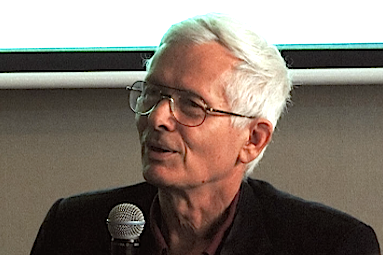21 January | RESEARCH PAPERS - B | admin
Are Proponents of Water Fluoridation Suppressing Scientific Evidence – Debate?
Indian researchers describe skeletal fluorosis
in its mild form, even before it is visible on
x-rays, as involving pain and stiffness
in bones and joints — symptoms
which are similar to those
of arthritis.
Dr. Mark Diesendorf
A Kick In The Teeth For Scientific Debate
‘ARE PROPONENTS OF WATER FLUORIDATION
SUPPRESSING SCIENTIFIC EVIDENCE
AND DEBATE?’
INTRODUCTION:
Fluoridation involves increasing the generally low natural levels of fluoride in drinking water, by a factor of 5 to 10, to about 1 part per million (ppm), in order to try and reduce tooth decay in children’s teeth.
Before 1950, fluoride was generally considered to be a toxic environmental pollutant, and fluoride levels of 1 ppm or more were considered to be sufficient reason for rejection of a water supply in the USA.
Dental and skeletal fluorosis (both discussed below) were already known to be among the ill-effects of ingestion and inhalation of fluoride.
Fluoridation was first introduced as a public health measure in the USA in the 1950s, after cross-sectional studies of naturally fluoridated regions of that country suggested that levels of tooth decay declined as the fluoride concentration in drinking water increased. An intense lobbying campaign was organised by a group of dentists and dental officials. Several ‘controlled fluoridation trials’ were conducted in the USA and Canada and, even before they were complete, the US Public Health Service reversed its previous cautious stance and endorsed fluoridation.
.
Then, in Australia, the National Health & Medical Research Council, Australian Dental Association and Australian Medical Association all endorsed fluoridation in the 1950s, despite considerable opposition from doctors in the letters columns of the Medical Journal of Australia. At that time there was almost no knowledge of the mechanisms of action of fluoride in the human body. The promoters of fluoridation, rewriting existing scientific knowledge, claimed that there were no adverse effects, apart from a slight increase in the prevalence of dental fluorosis (fluoride-induced mottling of teeth).
In 1960, a book published by Dr Philip R.N. Sutton, a dental researcher at the University of Melbourne, showed that the early North American fluoridation trials were riddled with fundamental errors of experimental design and were therefore unreliable. More recently, Dr John Colquhoun, former head of the New Zealand Fluoridation Promotion Committee, called into question the early research of naturally fluoridated communities of the USA, by showing that the key published paper derived its results by selecting a few communities from hundreds actually studied. However, by then fluoridation had become institutionalized in several countries, including Australia and New Zealand.
Nowadays the majority of people consume artificially fluoridated water in only six countries: USA, Australia, New Zealand, Ireland, Columbia and Singapore. The vast majority of countries have discontinued or never implemented fluoridation.
My original interest in this controversial issue arose 25 years ago when I was secretary of the Society for Social Responsibility in Science in Canberra. Since then, from time to time, I’ve published papers on the subject in scholarly journals such as Nature and Australia & New Zealand Journal of Public Health (1). Recently I had the opportunity to attend the international conference on fluoride research, held in Dunedin, New Zealand in January 2003, and to review the issues.
Health hazards of fluoridation
One manifestation of fluoride toxicity is the high prevalence of dental fluorosis. This is not simply a cosmetic effect, as apologists for water fluoridation like to say. In the more severe forms, dental fluorosis involves damage to tooth enamel and tooth function. In artificially fluoridated regions, dental fluorosis is now much more prevalent and severe than the initial proponents of fluoridation predicted. The University of York’s Fluoridation Review (2) estimates that up to 48% of children in fluoridated areas have some form of dental fluorosis. To reduce this to the original target of 10% of the population with so-called ‘mild’ dental fluorosis, we would have to terminate fluoridation.
Fig. 1: Severe dental fluorosis with discolouration and pitting — 9 year old boy. Photo: Dr John Colquhoun, New Zealand.
When people drink fluoridated water, about half the fluoride is stored in the bones and the rest is mostly excreted through the kidneys (provided the kidneys are working properly). There is a large and growing body of research on a fluoride-induced bone disease called skeletal fluorosis. This disease is observed on x-rays as increased bone density, structural damage to bones, and calcification of joints and ligaments. In severe cases, some patients cannot straighten their arms or even walk upright.
Most people assume that these severe manifestations of skeletal fluorosis occur at much higher fluoride levels than the 1 ppm that is in fluoridated Australian and New Zealand water supplies and that our health authorities have ensured that there is a very large safety margin for artificial fluoridation. To the contrary, clinically significant cases of skeletal fluorosis have been reported in at least 9 papers from 5 countries when natural fluoride concentrations are below 4 ppm and are mostly below 2.5 ppm (3). A few cases are even reported in India and China at fluoride concentrations slightly below 1 ppm. Incidentally, in India and China naturally occurring fluoride is regarded as a chronic poison and the main issue is how to remove it from drinking water as effectively and cheaply as possible.
Unfortunately, there are no well-designed studies to detect skeletal fluorosis in artificially fluoridated regions of western countries. American and Australian medical doctors are taught that the disease does not exist below 4 ppm and very few would be able to recognise it. However, Indian researchers describe skeletal fluorosis in its mild form, even before it is visible on x-rays, as involving pain and stiffness in bones and joints — symptoms which are similar to those of arthritis.
A report by Access Economics for the Arthritis Foundation of Australia found that 3.1 million (16.5%) Australians had arthritis in June 2000, up from 14.7% in 1995. Concern about the massive increase in arthritis in the USA is reflected in the cover story of Time Magazine of 16 December 2002 being devoted to it.
Arthritis is a multi- factorial disease. Is it possible that part of this big increase is actually the early stages of skeletal fluorosis?
Fig. 2: X-ray showing fluorotic calcification (arrowed) in forearm of 65-year-old North African male residing in Tolga (2.5 ppm) in the Sahara. Photo courtesy of Prof. F. Pinet.
The question of safety margins has been addressed in more detail by Dr William Hirzy of the union of the scientists at the US Environmental Protection Agency. Dr Hirzy points out that, on the basis of toxicology, safety levels should be set to protect those members of the community who are at greatest risk. This goal means that environmental chemicals generally have a safety margin of at least 100 times the exposure level. This allows for both the wide range of individual sensitivities to the chemical and the wide range of individual exposures. But, in the USA, the unsafe level for fluoride in drinking water has been set at only 4 times the average level of artificially fluoridated drinking water, on the basis that it should avoid anyone getting crippling skeletal fluorosis. This was done by ignoring the body of contrary scientific data from naturally fluoridated regions of developing countries and the USA itself (4).
The notion that there is an adequate safety margin can also be refuted by simply considering the wide range of variation of water intakes among people. Groups with high water intake include athletes, outdoor workers, people with diabetes insipidus, and infants who are bottle- fed with milk formula reconstituted with fluoridated water. Incidentally, these infants receive 100 times the daily fluoride dose of breast-fed babies and at least 4-6 times that recommended by medical authorities for fluoride supplementation in unfluoridated areas (5). In practice, the top fluoride consumers in places with 1 ppm of fluoride in drinking water ingest about the same amount of fluoride daily as the average fluoride consumers in places with 4 ppm.
As we age, the amount of fluoride stored in our bones steadily increases. Dr Paul Connett, Professor of Chemistry at St Lawrence University in the USA, argues that it is this cumulative dose that is the significant dose in determining whether people develop skeletal fluorosis and hip fractures in old age. Several years ago, people with another bone disease, osteoporosis, were treated with high doses of fluoride for just a few years. As a result they developed a high prevalence of hip fractures and these results are widely accepted (6). According to a simple calculation, these people received a similar cumulative dose of fluoride to that which will be ingested by those drinking fluoridated water at 1 ppm for a lifetime.
On comparing hip fracture rates between fluoridated and unfluoridated communities around the world, there have now been 19 studies, and 11 of them show a higher rate of hip fractures in fluoridated communities (7). In particular, a recent epidemiological study, which examined the aged in six naturally fluoridated Chinese villages, hip fracture rates doubled at 1.5 ppm, and tripled at 4.3 ppm, when compared to the fracture rates at 1 ppm fluoride (8). This finding again suggests a very small (if any) safety margin for such a serious outcome. In Mexico, a linear correlation between the severity of dental fluorosis and the incidence of bone fractures in children has been observed (9).
.
Biological effects of fluoride
Some worrying results have also been published on the biological effects of fluorides, based on laboratory and animal experiments. It is well known to biochemists that, contrary to one of the profluoridation myths, fluoride is highly active biologically, forming a strong hydrogen bond with the groups found in proteins and nucleic acids (10). In vitro experiments demonstrate that fluoride inhibits enzymes, and induces chromosome aberrations (11) and genetic mutations (12).
Professor Anna Strunecka of Charles University in the Czech Republic has shown in laboratory experiments that fluoride in the presence of aluminum disrupts G-proteins (13). G- proteins take part in a wide variety of biological signaling systems, helping to control almost all important life processes. Furthermore, pharmacologists estimate that up to 60% of all medicines used today exert their effects through a G-protein signaling pathway. Professor Strunecka suggests that aluminium fluoride (AlFx) complexes might induce alterations in homeostasis, metabolism, growth and differentiation in living organisms. Thus, the malfunctioning of G-proteins could be a causal factor in many human diseases, including Alzheimer’s disease, asthma, memory disturbance, migraine and mental disorders.
Animal experiments reveal that fluoride increases the uptake of aluminum into the brain at 1 ppm in the drinking water (14). Dr NJ Chinoy from Gujarat University, India, has found that higher doses of fluoride cause reproductive problems (15). Dr Z. Machoy, from the Pomeranian Academy of Medicine, Poland, points out that AlF3 activates several guanine nucleotides, mimicking the actions of some neurotransmitters and hormones. His group has performed computer modeling of how AlF3 attacks the biologically important GDP nucleotide (16).
Research on aged human cadavres by Dr Jennifer Luke at University of Surrey has shown that fluoride concentrates in the pineal gland (17). Furthermore, in animal studies, she showed that this concentration is associated with the earlier onset of puberty. As a mechanism she makes the hypothesis that the increased fluoride concentration leads to the reduced production of melatonin (because fluoride is known to inhibit the enzymes needed to produce it) and that this in turn leads to an accelerated sexual maturation. This work dovetails with studies which have shown that girls in the US – one of the world’s most heavily fluoridated countries – are reaching puberty earlier and earlier.
.
Proponents refuse scientific debate
No matter how much evidence of fluoridation hazards is put forward, the standard response by proponents of fluoridation is to chant that fluoride is safe and effective, and that any scientific questioning of fluoridation could undermine what they describe as “one of the top 10 public health measures”. As a matter of policy, pro-fluoridation officials and professionals refuse invitations to participate in conferences, scientific seminars and public debates where an anti-fluoridation case is presented.
On 6 May 2003 the US Environmental Protection Authority sponsored a scientific debate on fluoridation in Washington DC. The ‘anti’ case was presented by Professor Paul Connett (mentioned above). But, despite sending invitations to many prominent pro-fluoridation doctors and dentists, the EPA could find no-one willing to present the pro-fluoridation case at the ‘debate’. In Australia and New Zealand, pro-fluoridation authorities have also refused to debate Professor Connett and other scientific opponents of fluoridation. This suggests that proponents are maintaining fluoridation by political power and influence, rather than by open, rational, scientific argument and evidence.
.
Alleged benefits of fluoridation
When it is safe from contradiction in public, the Australian Dental Association still repeats the ancient, discredited claim that fluoridation reduces tooth decay by “up to 50%”. However, a major cross-sectional survey of 84 cities in the USA by JA Brunelle and JP Carlos at the National Institute of Dental Research found that children aged 5 to 17, who had lived their whole lives in fluoridated cities, had on average only 0.6 fewer decayed, missing and filled tooth surfaces (DMFS) per child than those in unfluoridated cities (18). In Australia a survey by pro-fluoridationist Professor John Spencer from University of Adelaide (1996) found an average reduction of only 0.12 to 0.3 DMFS per child (19). Since the total number of permanent tooth surfaces in a child’s mouth is 128, the US and Australian reductions are less than one half and one quarter of one percent of tooth surfaces, respectively.
To make matters worse, this negligible benefit is not obtained from ingesting fluoride. Many dental researchers (such as Dr Hardy Limeback from University of Toronto and Professor Brian Burt from University of Michigan) and the pro-fluoridation US Center for Disease Control, now accept that the mechanisms are predominantly ‘topical’, that is, acting directly on the surface of teeth (20). People are being misled into drinking a medication that does not need to be swallowed. Brushing with fluoride toothpaste, which contains up to 1,000 times the fluoride concentration of fluoridated water, is sufficient.
.
Role of vested interests
Several fluoride researchers have published accounts of attempts by dental, medical and public health authorities to intimidate them and to suppress their work (21). I had personal experience of this, but fortunately am less vulnerable, since I am not a dentist or a medical doctor and so do not require a licence to practise.
Pro-fluoridation dentists consider their support for fluoridation as their contribution to public health. Only a few, like the late Dr John Colquhoun, former head of the New Zealand Fluoridation Promotion Committee, have the knowledge and courage to admit publicly that they were wrong.
.
It is my personal opinion that, behind the dental and medical associations, who promote fluoridation with religious fervour, are powerful corporate interests:
-
1.) the sugary food industry (e.g. sugar, soft drinks, processed breakfast cereals and sweets) that benefits from the notion that there is a Magic Bullet that stops tooth decay, whatever junk food our children eat;
-
2.) the phosphate fertilizer industry that sells its waste silicofluoride to be put in drinking water instead of paying for its safe disposal; and
-
3.) the aluminium industry, which had an image problem with the atmospheric fluoride pollution it produces, and funded some of the early research in naturally fluoridated regions of the USA that appeared to show that fluoride was good for teeth.
Some governments support fluoridation because they consider it to be a cheaper way of addressing tooth decay than running effective dental services for school-children and older people, and politically safer than tackling the promotion of sugary foods that are the main cause of tooth decay.
CONCLUSION:
This review of fluoride research reveals a situation where people in fluoridated communities are required to ingest a harmful and ineffective medication with uncontrolled dose. The medication actually doesn’t need to be swallowed, since it acts directly on tooth surfaces. The benefit of fluoridation is at best a reduction in tooth decay in only a fraction of one tooth surface per child.
Pro-fluoridation authorities ignore and suppress the above scientific results, that do not support the official line, and refuse to participate in scientific debate. It appears that fluoridation is an issue where the scientific method and principles are being set aside by public health authorities. I must stress that I do not consider the promotion of fluoridation to be a conspiracy.
Rather, I see it as a result of a conjunction of professional, corporate and political interests.
.
Further reading
The pro-fluoridation position is articulated at the web page of the American Dental Association www.ada.org. The anti-fluoridation position is further elaborated at www.fluoridealert.org and a comprehensive and annotated bibliography can be found at www.SLweb.org/bibliography.html.
References
-
1.)) e.g. Diesendorf M 1986, ‘The mystery of declining tooth decay’, Nature 322: 125-129; Diesendorf M, Colquhoun J, Spittle BJ, Everingham DN, Clutterbuck FW 1997, New evidence on fluoridation. Australian & New Zealand J. Public Health 21:187-190; Diesendorf M 1995, ‘How science can illuminate ethical debates: a case study on water fluoridation’, Fluoride 28(2): 87- 104.
-
2.)) McDonagh M, et al. 2000, A Systematic Review of Public Water Fluoridation. (“The York Review”), NHS Center for Reviews and Dissemination, University of York, September.
-
3.)) e.g. Singh A, Jolly SS & Bansal BC, 1961, Skeletal fluorosis and its neurological complications, Lancet 1:197-2000; Jolly SS, Prasad S, Sharma R & Chander R, 1973, Endemic fluorosis in Punjab. I. skeletal aspect, Fluoride 6:4-18; Siddiqui AH, 1970, Neurological complications of skeletal fluorosis with special reference to lesions in the cervical region, Fluoride 3:91-96.
-
4.)) Diesendorf M, 1990, The health hazards of fluoridation: a re-examination, International Clinical Nutrition Review 10(2):304-321.
-
5.)) Diesendorf M & Diesendorf A 1997, Suppression by medical journals of a warning about overdosing formula-fed infants with fluoride, Accountability in Research 5:225-237.
-
6.)) Riggs BL, et al., 1990, Effect of fluoride treatment on the fracture rates in postmenopausal women with osteoporosis, New England Journal of Medicine 322:802-809.
-
7.)) See references listed in http://www.SLweb.org/fluoride-bone.html
-
8.)) Li Y, et al. 2001, Effect of long-term exposure to fluoride in drinking water on risks of bone
fractures. Journal of Bone and Mineral Research 16(5):932-9.
-
9.)) Alarcon-Herrera MT, et al. 2001, Well water fluoride, dental fluorosis, bone fractures in the Guadiana Valley of Mexico. Fluoride 34(2): 139-149.
-
10.)) Emsley J, et al. 1981, An unexpectedly strong hydrogen bond: Ab initio calculations and spectroscopic studies of amide-fluoride systems. Journal of the American Chemical Society 103:24-28.
-
11.)) Suzuki N, Tsutsui T. 1989, [Dependence of lethality and incidence of chromosome aberrations induced by treatment of synchronized human diploid fibroblasts with sodium fluoride on different periods of the cell cycle]. [Article in Japanese] Shigaku. 77(2):436-47.
-
12.)) Caspary WJ, et al. 1987, Mutagenic activity of fluorides in mouse lymphoma cells. Mutation Research 187(3):165-80.
-
13.)) Strunecka A & Patocka J, 1999, Pharmacological and toxicological effects of aluminofluoride complexes, Fluoride 32:230-242.
-
14.)) Varner JA, et al. 1998, Chronic administration of aluminum-fluoride and sodium-fluoride to rats in drinking water: Alterations in neuronal and cerebrovascular integrity, Brain Research 784:284-298.
-
15.)) Chinoy, NJ, Narayana MV 1994, In vitro fluoride toxicity in human spermatozoa. Reproductive Toxicology 8(2):155-9.
-
16.)) Machoy Z 2002, Interactions between guanosine diphosphate (GDP) and aluminum fluoride (AlF3) (conference abstract), Fluoride 35:244-5.
-
17.)) Luke J 2001, Fluoride deposition in the aged human pineal gland, Caries Research 35:125-128.
-
18.)) Brunelle, JA & Carlos JP, 1990, Recent trends in dental caries in U.S. children and the effect of water fluoridation, Journal of Dental Research 69 (special edition): 723-727.
-
19.)) Spencer AJ, Slade GD & Davies M, 1996, Water fluoridation in Australia, Community Dental Health 13, Supplement 2, 27-37.
-
20.)) Centre for Disease Control 2001, Recommendations for Using Fluoride to Prevent and Control Dental Caries in the United States, Mortality and Morbidity Weekly Review 50(RR14):1-42. Centre for Disease Control 1999, Achievements in Public Health, 1900-1999: Fluoridation of Drinking Water to Prevent Dental Caries. Mortality and Morbidity Weekly Review 48(41): 933- 940.
-
21.)) For an early account, see Waldbott G 1965, A Struggle with Titans, New York: Carlton Press.
The author
Dr Mark Diesendorf is Director of Sustainability Centre Pty Ltd, which is a Sydney-based public-interest research, consulting and training organization that is devoted to various aspects of ecologically sustainable development.
He is also Adjunct Professor of Sustainability Policy at Murdoch University, vice-president of the Australia New Zealand Society for Ecological Economics, and co-editor and principal author of the book, Human Ecology, Human Economy: Ideas for an Ecologically Sustainable Future, Allen & Unwin, 1997.
From 1996 to 2001 he was Professor of Environmental Science and Foundation Director of the Institute for Sustainable Futures at University of Technology, Sydney.
Sustainability Centre Pty Ltd
PO Box 521, Epping,
Sydney NSW 1710,
Australia
VIDEO: ‘FLUORIDEGATE’
What they do to whistle blowers!
A light weight start, but stay with it.
http://www.fluoridegate.org/






